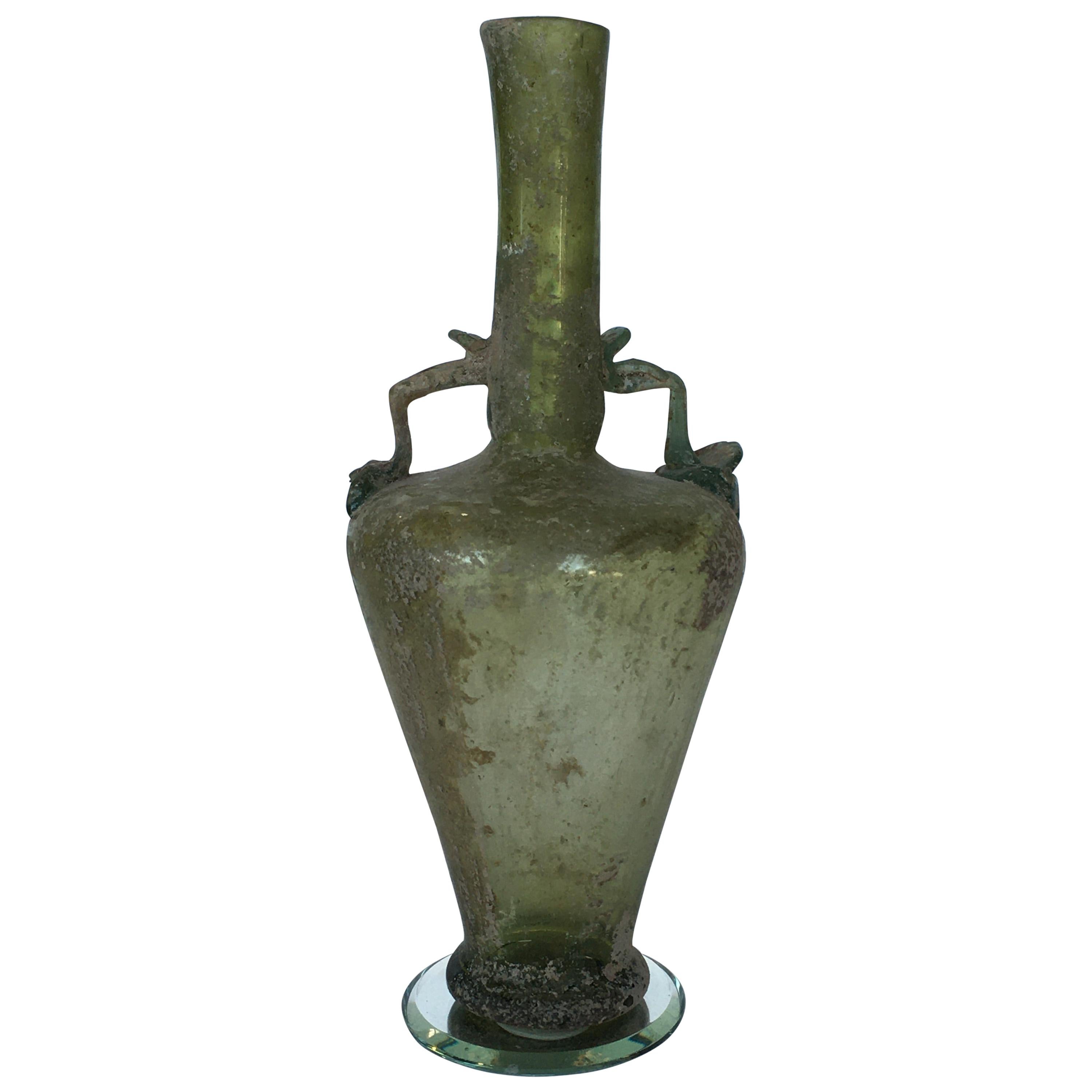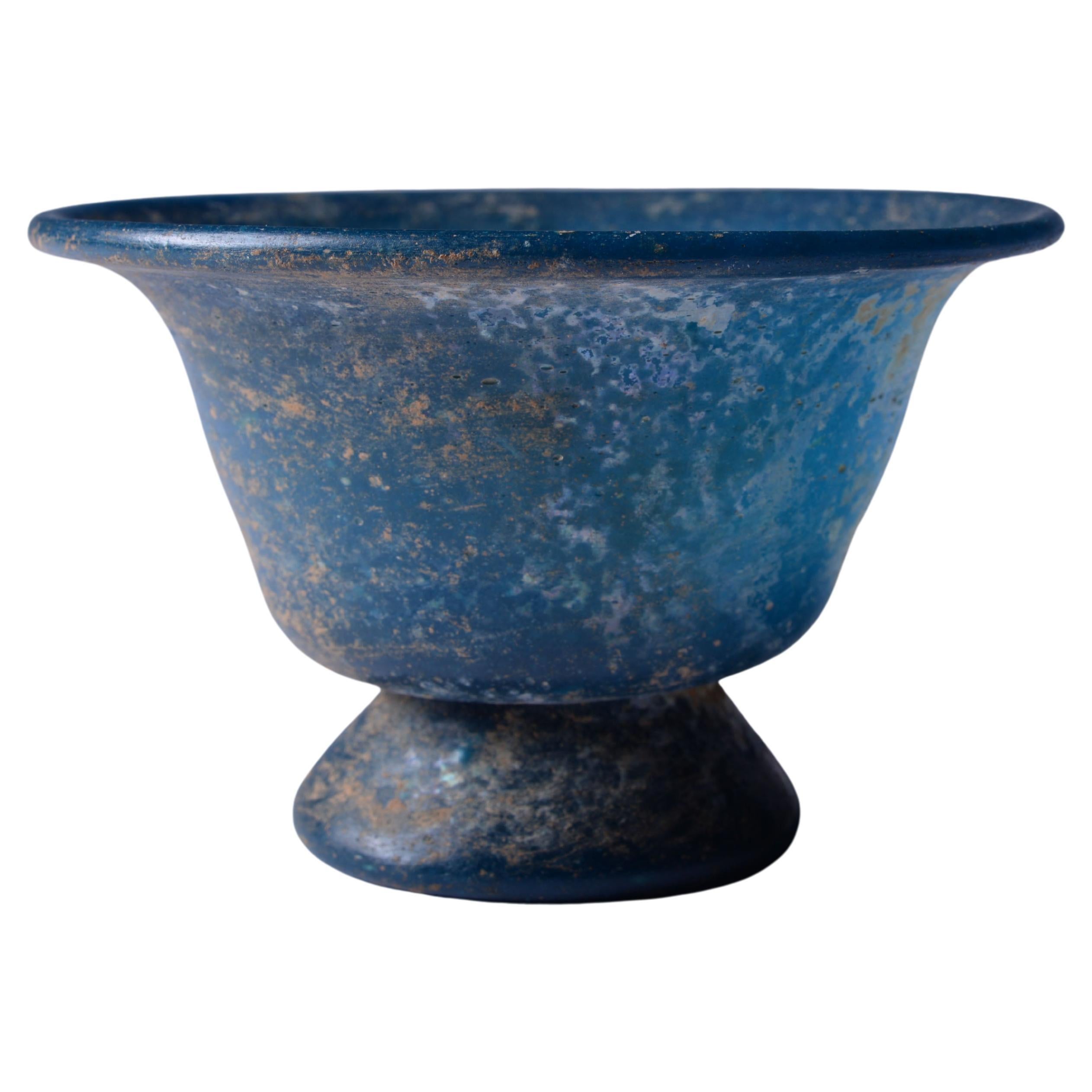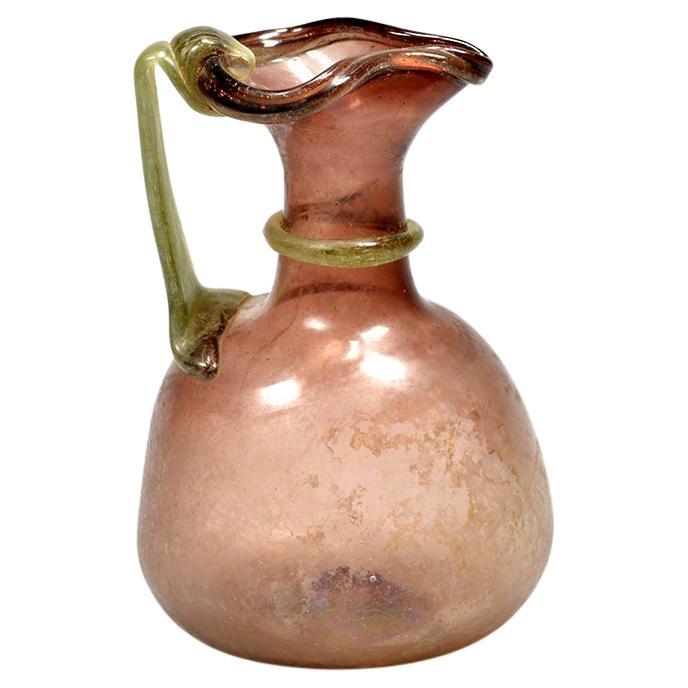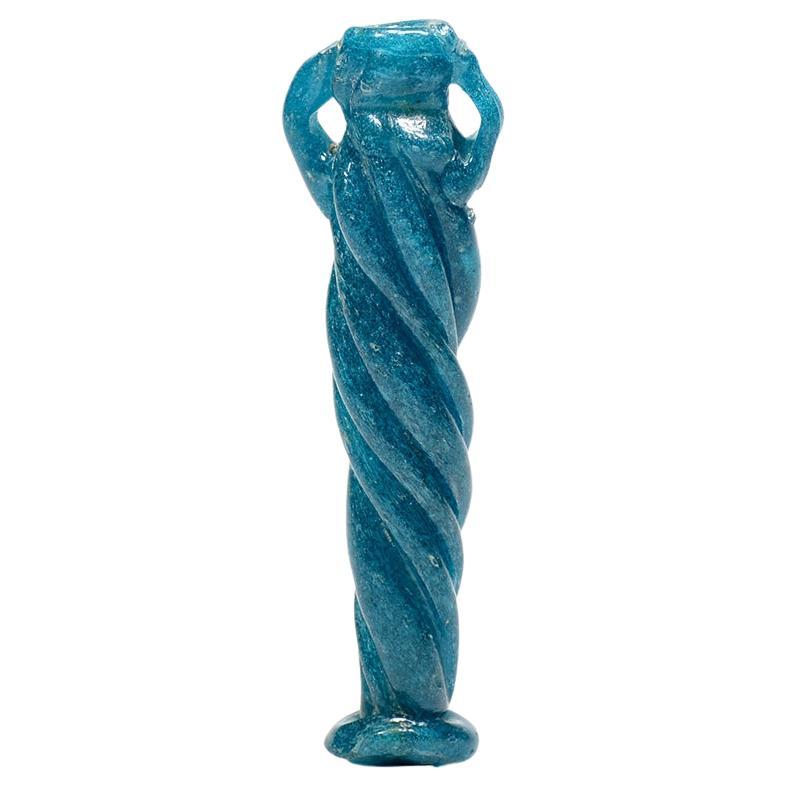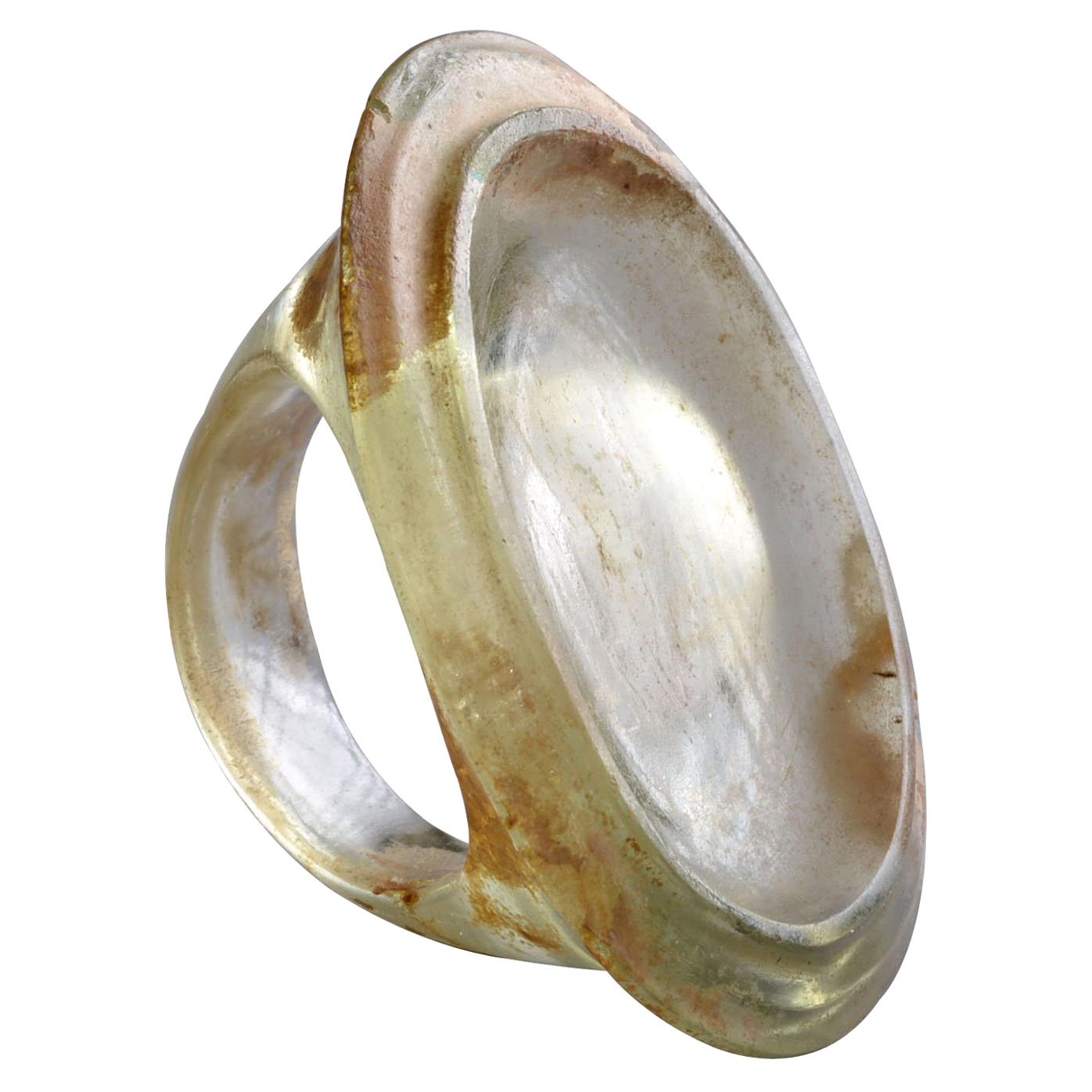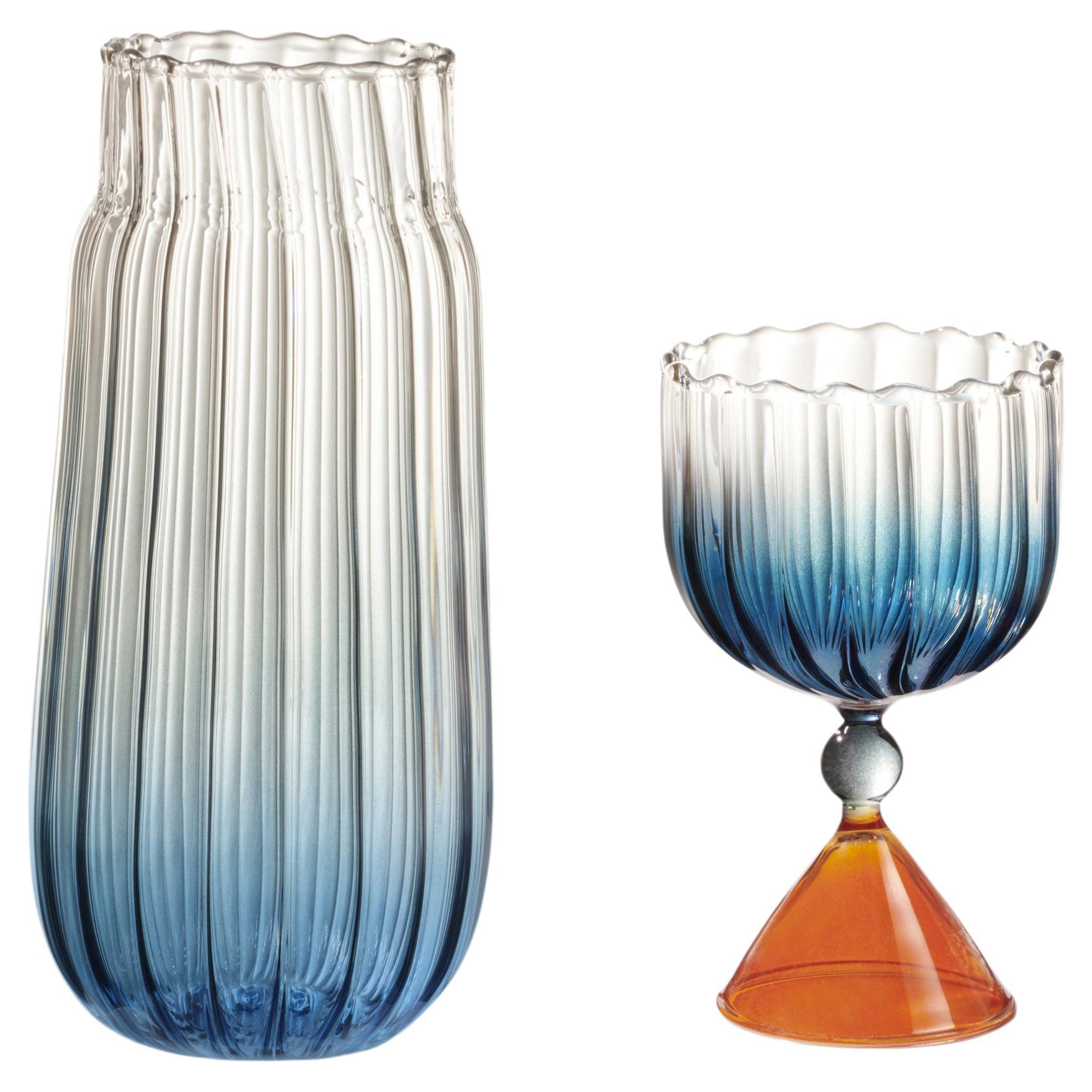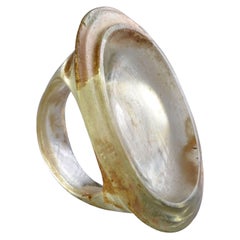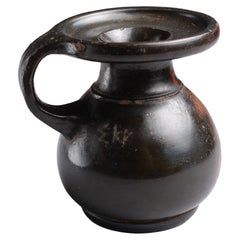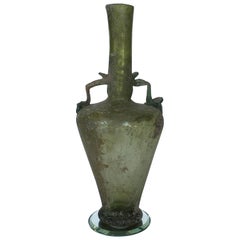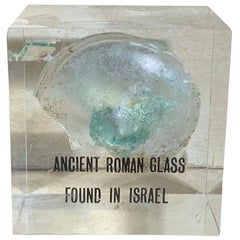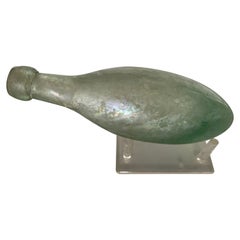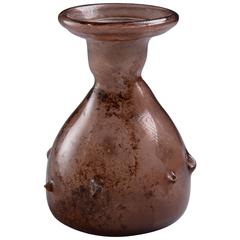
Ancient Roman Aubergine Glass Bottle, 200 AD
View Similar Items
Want more images or videos?
Request additional images or videos from the seller
1 of 7
Ancient Roman Aubergine Glass Bottle, 200 AD
About the Item
- Dimensions:Height: 3.5 in (8.89 cm)Diameter: 2.5 in (6.35 cm)
- Style:Classical Roman (Of the Period)
- Period:
- Date of Manufacture:200 AD
- Condition:Excellent, two of the pinched decorations with minor chips.
- Seller Location:London, GB
- Reference Number:1stDibs: LU105226407843
About the Seller
5.0
Recognized Seller
These prestigious sellers are industry leaders and represent the highest echelon for item quality and design.
Established in 2008
1stDibs seller since 2014
100 sales on 1stDibs
Typical response time: 7 hours
Associations
LAPADA - The Association of Arts & Antiques DealersInternational Confederation of Art and Antique Dealers' AssociationsThe British Antique Dealers' Association
More From This SellerView All
- Ancient Roman Turquoise Glass CupLocated in London, GBTurquoise glass cup Roman Empire, circa 3rd-4th century A.D. With old label reading ‘’965’’. “Pliny relates that the art of glass-making [.] was actua...Category
Antique 15th Century and Earlier Italian Classical Roman Glass
MaterialsGlass
- Ancient Hellenistic Glass Finger RingLocated in London, GBThis beautifully preserved ring was cast from light green transparent glass. Its large size and shape are typical of Hellenistic finger rings, and its now ...Category
Antique 15th Century and Earlier Classical Greek Glass
MaterialsGlass
- Ancient Greek Perfume BottleLocated in London, GBAthenian Black-glaze perfume pot with inscription Athens, c. 425-400 B.C. Terracotta Measures: Height: 9cm; diameter across lip: 7.5cm; width including handle: 9cm This 5th Cen...Category
Antique 15th Century and Earlier Italian Classical Greek Bottles
MaterialsPottery
- Roman Marble FootLocated in London, GBRoman marble Fragment of a Right Foot with Sandal Circa 1st - 2nd Century A.D. An evocative Roman marble fragment, preserving the front portion of an over-lifesized sandalled foot. The toes, nails, and bridge of the foot have been sensitively carved. The outer sole of the sandal remains, with delicate, pointed straps joining between the first two toes in a diamond shape. This fragment once belonged to Danish sculptor Jens Adolf Jerichau...Category
Antique 15th Century and Earlier Italian Classical Roman Figurative Scul...
MaterialsMarble
- Roman Marble Head of SophoclesLocated in London, GBRoman Marble Head of Sophocles Circa 1st-2nd Century Marble This fine Roman marble head preserves the proper left side of the face of a middle-aged man, with broad nose, soft lips, and bearded chin. The short beard and sideburns have been finely carved with a flat chisel, to render the soft, wavy strands of hair. The cheekbone, undereye, and nasolabial folds have been delicately modelled in the marble by a skilled hand. In a letter from 1975, the former director of Ny Carlsberg Glyptotek, Copenhagen, suggested that the head could depict the Ancient Greek tragedian Sophocles. Few figures in the Classical world stand aside Sophocles (c. 496-406 BC), inarguably the best known of the Athenian tragedians, in terms of the impact his works have had on the history of art and literature. The psychological depth he achieves in the seven of the 123 of his plays that have survived to the present day - most notably the three Theban plays: Antigone, Oedipus the King, and Oedipus at Colonus - not only inspired the Athenians, among whom Sophocles was honoured as a hero long after his death, but in our own time, have provoked landmark works on phychoanalysis and literary criticism, by thinkers like René Girard and, most famously, Sigmund Freud. In its masterful treatment of the marble this fragment sensitively captures the features of one of the most important playwrights of all time. Height on stand: 7.9 inches (20 cm). Provenance: Collection of Danish sculptor Jens Adolf Jerichau...Category
Antique 15th Century and Earlier Classical Roman Busts
MaterialsMarble
- Roman Marble Statuette of JupiterLocated in London, GBRoman Marble Fragment of jupiter Circa 2nd-3rd Century A.D. Measure: Height: 19.7 cm This beautiful Roman fragmentary statuette depicts Jupiter, the king of the gods, here recognisable from his two chief attributes, the eagle with outstretched wings - according the Pseudo-Hyginus, singled out by Jupiter because ''it alone, men say, strives to fly straight into the rays of the rising sun'' - and the base of the scepter, which remains at the side of the left foot, an aspect likely borrowed from the statue of Zeus at Olympia, once one of the Seven Wonders of the World. Though much of the original piece has been lost, the subtle anatomical detail in the feet mark this out as a piece of exceptional quality, and the work of an artist of particular talent and patience - as Johann Winckelmann once said of the famous Belvedere Torso, ''if you contemplate this with a quiet eye [...] the god will at once become visible in this stone.'' This fragment once caught the eye of Henry Howard, 4th Earl of Carlisle (1694-1758), a Knight of the Garter and among the most prolific collectors of his day. The piece, acquired during his travels to Rome, was proudly displayed on an alcove of the Western Staircase of Castle Howard...Category
Antique 15th Century and Earlier Italian Classical Roman Figurative Scul...
MaterialsMarble
You May Also Like
- Ancient Roman Glass BottleLocated in Los Angeles, CAAncient Roman glass bottle with thin thumb handles, circa 2nd-3rd century AD. Origin Roman Empire.Category
Antique 15th Century and Earlier Italian Other Glass
MaterialsGlass
- Ancient Roman GlassLocated in Delray Beach, FLBeautiful original ancient Roman glass embedded in Lucite cube, was used for containing perfume. Exceptional object of art for display.Category
Antique 15th Century and Earlier Israeli Glass
MaterialsMurano Glass
$395 Sale Price71% Off - Ancient Classical Style Antique Iridescent Glass BottleLocated in New York, NYLucite base holder, Measures. 3.4" x 4.2" x 1.8"L.Category
Antique Mid-18th Century Unknown Classical Roman Bottles
MaterialsBlown Glass
$1,200 Sale Price33% Off - A Roman purple glass jugLocated in UTRECHT, UTA jug with a bell-shaped body and clover lip, a green trailed handle and a green collar in the middle of the cylindrical neck. 12.4 cm (h) Intact Provenance: Ex C.A. Hessing Collection, coll. no.57 Ex Anonymous sale; Bonhams, London, 22 September 1998, lot 226 Published: Sheppard & Cooper Ltd, Glass: The Eighth Wonder of the Ancient World, London, 1994, p.14, no.75. Roman glass was used primarily for the production of vessels. It developed from Hellenistic technical traditions, initially concentrating on the production of intensely coloured cast glass vessels...Category
Antique 15th Century and Earlier Italian Classical Roman Glass
MaterialsGlass
$6,809 - A Roman yellow glass unguentariumLocated in UTRECHT, UTBelly-shaped with cylindrical neck and with folded down collar rim, the unguentarium with twisted glass decoration with white intertwining the main yellow colour 4.5 cm (h) Intact Ex. German private collection H.G., collected between 1970s-1990s Roman glass was used primarily for the production of vessels. It developed from Hellenistic technical traditions, initially concentrating on the production of intensely coloured cast glass vessels...Category
Antique 15th Century and Earlier Italian Classical Roman Glass
MaterialsGlass
- A Late Roman turquoise glass rod-formed balsamariumLocated in UTRECHT, UTGlass balsamarium with a twisted tubular body, tapering towards the applied disc base, with two trailed handles 12.0 cm (h) Provenance: Ex anonymous Sale; Pierre Bergé Auctioneers, Paris, 17 January 2009, lot 38 Roman glass was used primarily for the production of vessels. It developed from Hellenistic technical traditions, initially concentrating on the production of intensely coloured cast glass...Category
Antique 15th Century and Earlier Italian Classical Roman Glass
MaterialsGlass
Recently Viewed
View AllMore Ways To Browse
Antique Colored Bottles
Ancient Glass Bottle
Antique Colored Glass Bottles
Ancient Roman Bottles
Ancient Roman Glass Bottle
Edward Coin
Antique Ruby Glass Bowl
Thomas Webb Crystal Glasses
Murano Glass Charger
Moser Cobalt
Baccarat Orange
Hermes New York Manhattan
18th C Drinking Glass
Nason Moretti Italian Blown Glass
Laguna B Glass
Lemonade Sign
Blue Champagne Flute
James Powell And Sons

